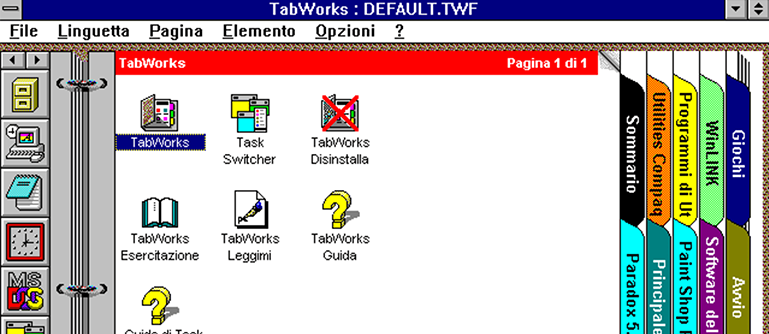- |
- |

It’s that time of the year again: company-wide Christmas celebrations, end-of-year barbecues, and office playlists comprised solely of Mariah Carey.
While that holy trinity of December traditions is very dear to my heart, this list of articles is based on a few of my other favourite things…
So, before you down tools for the year, read up on the best in tech, content, design and industry insights from throughout 2018. Consider the list an early Xmas gift.
Happy holidays from everyone at August, we’ll see you in the new year for our next instalment of Super8!
1. What self-awareness is (and how to cultivate it).

- Read the full article here.
- Written by Dr. Tasha Eurich.
- Contributor: Isabel Silvis.
With multiple end-of-year events looming on the horizon, here’s a piece that can help you better communicate with your family and friends. Self-awareness—or the capacity to focus upon and evaluate one’s self—is more than just a buzzword.
The bottom line is that self-awareness isn’t one truth. It’s a delicate balance of two distinct, even competing, viewpoints.
Research suggests that when we’re self-aware, we make better decisions, build stronger relationships, and communicate more effectively. While it might be considered vogue to practice self-awareness, it’s still a rare quality that you can hone with Tasha’s research.
With so many benefits, perhaps it’s time to turn your focus inwards.
2. The best UX is no user interface at all.

- Read the full article here.
- Written by Burke Holland.
- Contributor: Lucas Mounsey.
It could be a stocking stuffer this Christmas, or something you’ve been using all year—this piece from Burke Holland explores the emergence of voice technology.
Burke examines why services like Amazon Echo, Google Home or Apple HomePod are forcing designers to rethink the UX status quo, and why even a ‘perfect’ User Interface (UI) can be less than ideal.
Any UI, no matter how well crafted, is a necessary evil between the user and their intended action. With recent advances in Natural-Language Processing (NLP), voice technology has the potential to change the way we engage with interfaces online, and in our homes for years to come.
3. Wait But Why’s Tim Urban on parsing and transmitting complex ideas.

- Read full article here.
- Written by First Round.
- Contributor: Rowan Barnes.
Tim Urban’s Wait But Why series is always a favourite. If you find yourself on a bus, train or plane this holiday season, dig into his long-form content to learn something new.
In this article from First Round Review, Tim covers why complex ideas can be so difficult to explain and teach, arguing that it doesn’t matter how smart you are: everyone in the world is a layman at most stuff.
Our brains want ones and zeros. But the real world is analog, gray area and about spectrums.
It’s a fascinating read. Even if you take away just one of his simple approaches to sharing complex ideas—we’re confident your communication skills will rise to the challenge.
4. How to think like a programmer — lessons in problem solving.

- Read the full article here.
- Written by Richard Reis.
- Contributor: Kurt Smith.
It’s the end of year, and you’re trying to balance your gift shopping responsibilities, while preparing for a multitude of holiday festivities.
Perhaps it’s been left a little late, and it feels more overwhelming than festive. Sound familiar? With competing priorities and time constraints, it’s easy to see how you can benefit from a lesson in problem solving.
According to Steve Jobs, becoming a programmer may be the answer. Great programmers are often great problem solvers. In this article, Richard Reis’ framework may just be the answer for you to better understand, plan and divide complexities for success.
5. Get started with Motion Design in nine steps.

- Read the full article here.
- Written by Arpit Agarwal.
- Contributor: John Broadfoot.
Spread some cheer this month with motion animation. By definition, ‘animated’ means full of life and excitement. Animation adds life—and when it comes to software, it’s not just for delight, but for solving problems too.
Remember—Motion subconsciously builds the personality of your application. Much like layout, spacing, typography and colors.
We’re used to seeing the world move and shift around us, and if software can replicate the experience, we feel right at home.
This article from Marvel provides insight on when to use motion, what it can evoke (emotions and feeling), what it can convey (information and data) and some of the tools you’ll need to get started.
6. Trust your data: how to efficiently filter spam, bots and other junk traffic in Google Analytics.

- Read full article here.
- Written by Carlos Escalera.
- Contributor: David Baddock.
Who’s been naughty and who’s been nice? Can you trust your data to find out? Data hygiene and maintenance is critical in this age of data-driven decision making.
The reliability of your data doesn’t stop with input/output controls either but must be continually fine-tuned—using updated configuration, filters, and informed analysis.
Think of a Google Analytics property without filtered data as one of those styrofoam cakes with edible parts. It may seem genuine from the top, and it may even feel right when you cut a slice, but as you go deeper and deeper you find that much of it is artificial.
This highly practical article by Moz’s Carlos Escalera will help ensure your Google Analytics setup is accurate and spam-free.
7. What we’ve learned building a remote culture.

- Read the full article here.
- Written by Nick Francis.
- Contributor: Zoe Warne.
This time of year, there’s an opportunity to better connect with your family, friends or colleagues—and a great example of staying in touch online is remote working.
Transitioning to a remote company structure can create new ways of working, because it requires a shift in the way teams collaborate, communicate new processes, and adopt an ‘all-in’ attitude.
Though change can take time, there are many benefits for companies that rise to the challenge. Read on, as Help Scout’s Nick Francis provides excellent advice for those working with, or looking to build, a remote team.
8. Poor millenials.

- Read the full article here.
- Written by Michael Hobbes.
- Contributor: Elliott Grigg.
At the end of each year, it’s only natural to take stock of where you’ve come from, what you have, and where you’re heading in the year ahead.
This piece, written by Huffington Post’s Michael Hobbes, highlights the harrowing economic plight of millennials. The piece blends compelling 8-bit visuals with content so well, you’ll forget to cry over the price of your smashed avo.
According to Michael’s insight, the touchstone experience of millennials—the one thing that truly defines them—is not helicopter parenting, unpaid internships, or Pokémon Go. It’s uncertainty.
However, we’re certain about one thing: this is an incredible long-form read and an awesome experience in itself.
More Articles
Up for some more?
Get your monthly fix of August happenings and our curated Super8 delivered straight to your inbox.
Thanks for signing up.
Stay tuned, the next one isn't far away.
Return to the blog.
